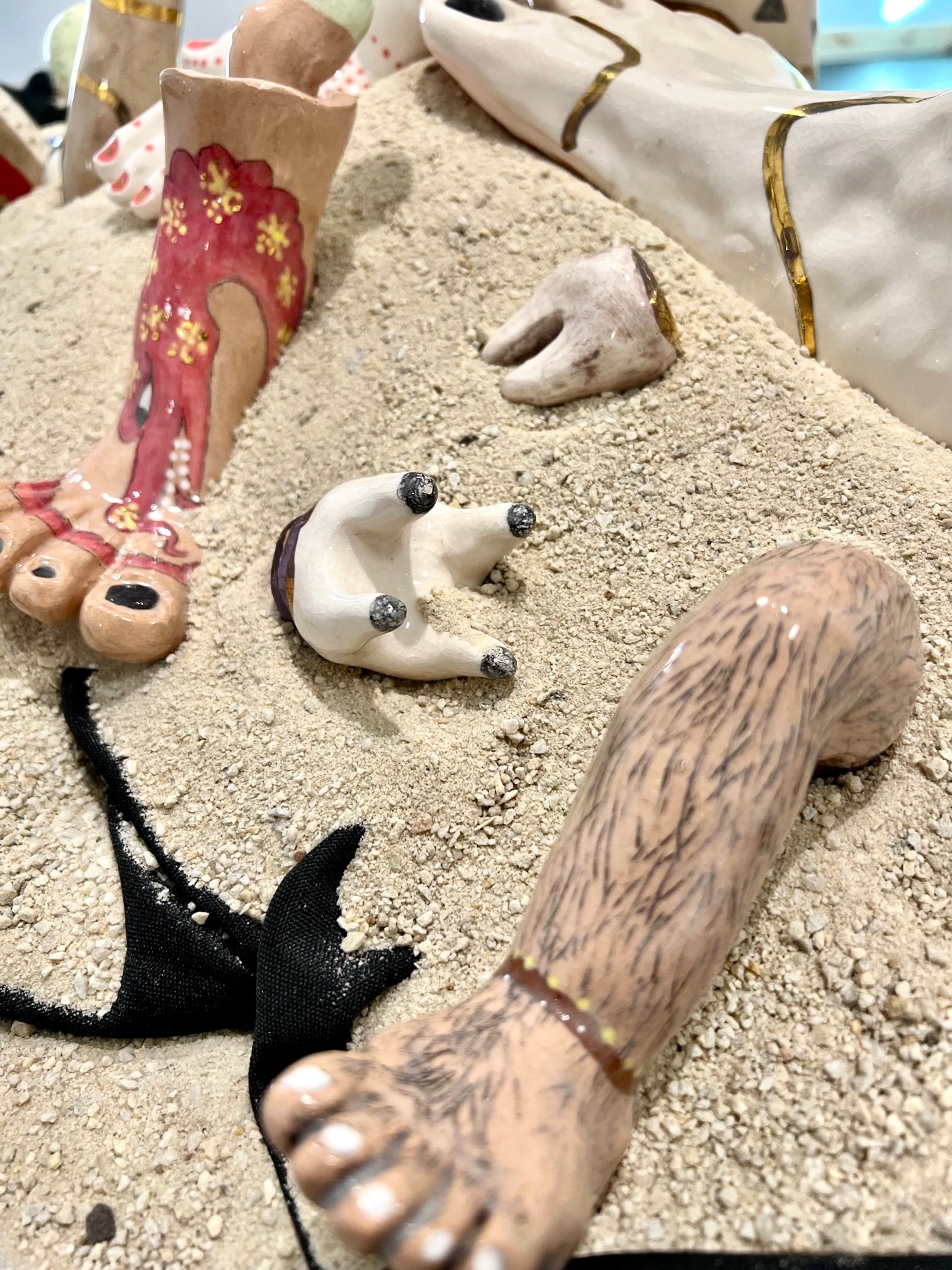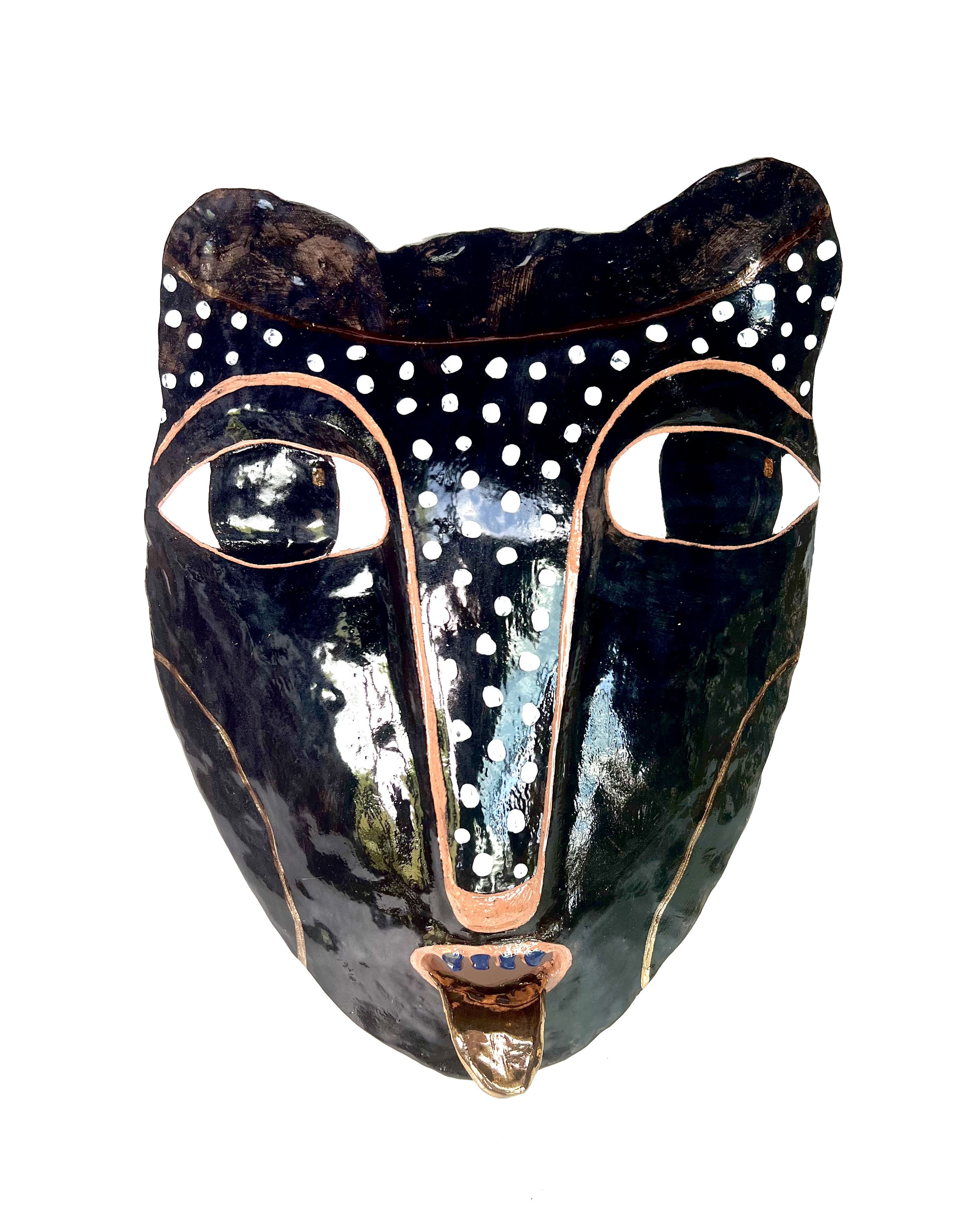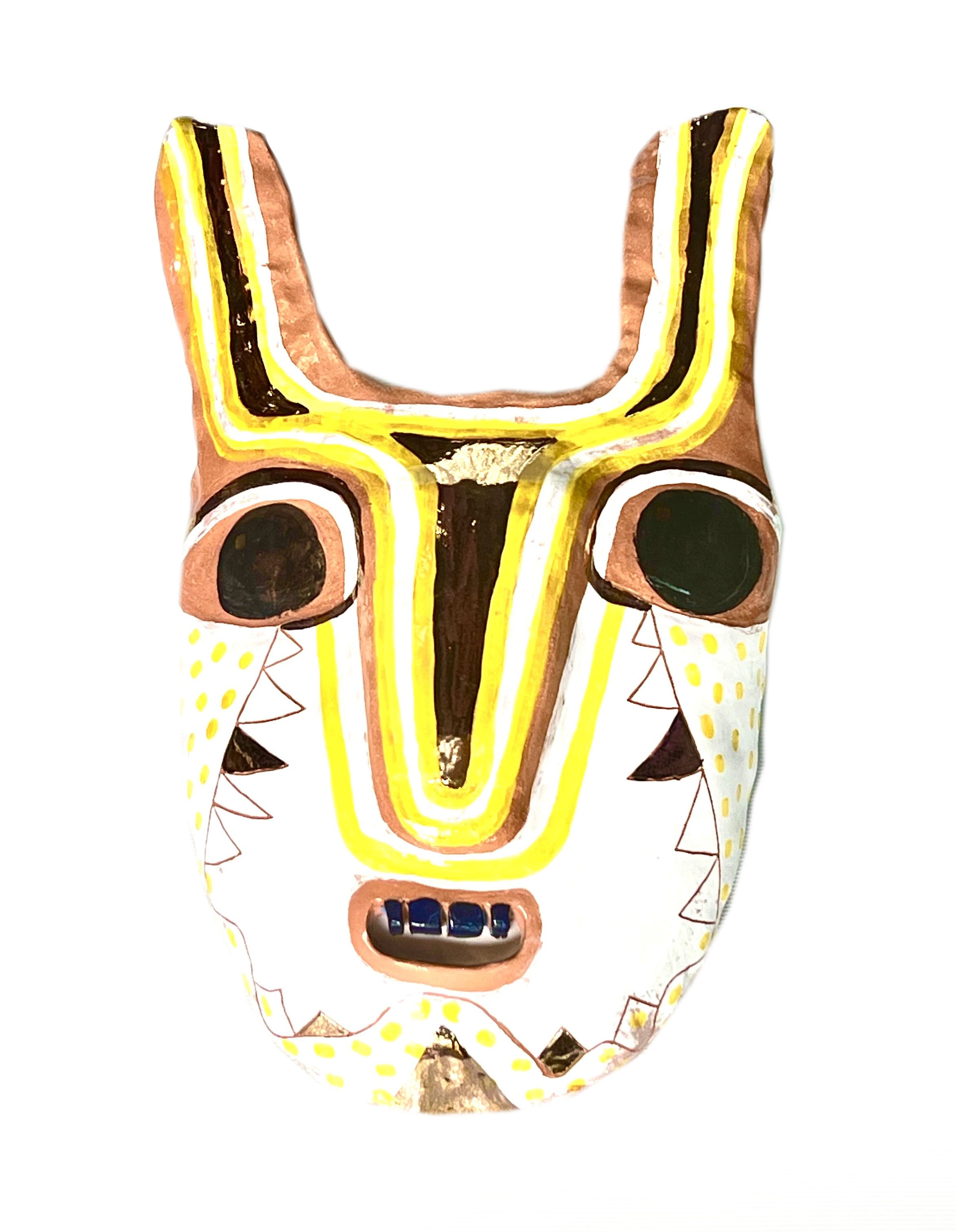Milagros Chat
Natalie Zayne speaks with Michela Martello and Yamila Diaz-Rahi about their collaborative ceramic practice: “Milagros.”
“From instruction comes destruction…”
Natalie Zayne: I would like to flesh out the story about the collaborative piece Milagros that we have on display at KIPNZ, or properly the work that became Milagros. Maybe you can start, Michela, a bit before the beginning, even before the show in Italy when the first iteration of the work was created. Were you already producing these individual pieces - of hands, feet, teeth, fingers, and legs - with the idea of putting them together rather than separately?
Michela Martello: Yes. Well, actually, the concept of this ceramic project was conceived by me and Yamila together since the very beginning. And that was more or less at the beginning of the pandemic. We wanted to produce something together because I was invited to have a solo show in Milano at Galeria Giovanni Bonelli and I wanted to collaborate with the ceramic piece with Yamila because I love her vision with ceramics, and I felt we needed to do something together. So we were having conversations and doing some sketches, some drawings, trying to see how we could work with our respective visions, integrating them. We kind of have the same energy, I would say. So we felt it was possible. At the same time it was heavy because our families were in lockdown in Italy, and in Argentina, and in New York. It felt like we were under some inexplicable experience that made us feel isolated, lonely; not detached, but distanced from the people that we love the most besides our immediate families that, thank God, were with us.
So that's how we received the fuel for the ideas for the work. We started with making the parts of our bodies using ceramics - hands, feet, eyes, teeth - basically anything that was easy to make a piece out of using ceramic clay, and the processes of glazing, etc.. And that was the way we could have a cathartic experience while not being able to be close to our mothers, sisters, fathers, friends, families: making these body shapes. In a way, we were sublimating the lack of touch with them and also between us, because at one point we were so freaked out by the idea of getting the virus that we kept sterilizing our hands, not touching one another. It really got into our heads, you know what I mean? Yamila can also speak to this because for her it was very, very personal.
Yamila Diaz-Rahi: Yes. For me, this collaboration with Michaela was super powerful because she really gave me the kick of creative action, and I really needed it. And everything suddenly flowed so well that we were just able to put an idea together and create together, even as we were working separately in our own houses. We totally trusted each other. Without like, calling and asking, What are you doing? Which color are you using? When we saw all the pieces together, they complemented each other so well that I don't know, it was really like magic. And the piece is still moving and transforming and it's never the same. Every time we put them together, it's different. That's the other amazing part of the piece. And also the process of doing the pieces of the ceramic was very powerful because it really felt to me that I was holding...somebody's hands. At the beginning it was like touching hands that felt familiar, like maybe my sister or my mother, who were far away. But then the more I worked, and made more and more, there came a feeling of people that I don't even know, who were far away; a feeling that I was touching their feet and really connecting with what we were all going through. I don't know. I can't even explain the feeling, but it was very powerful. And I'm very glad that Michaela gave me the kick of, let's do this, let's create, because at one point I wasn't even sure the show was going to happen. But Michaela said that the show really was going to happen! We were all locked up, locked into our houses and the work happened out of that.
Natalie: You are such different artists, but as you said before, Michela, you share a similar energy. And to that point, when the pieces are put together, the idea of who made what is so irrelevant, it's like you've made something completely else, which is part of the magic of it. The title of the first installation, from the Galleria Bonelli show, was From Destruction Comes Instruction. Do either of you want to say anything more about that title?
Michela: The first title, From Destruction comes Instruction, was in relation to the many deaths that were happening at that period. And of course, we felt very fearful and afraid of dying ourselves, or a member of our families. It was clear that the major element that makes us so fearful about death is our body, that which we feel belongs to us. So our body also represents the real manifestation of how we create attachment. So while we were chopping up parts of our body through an artistic process, I like to believe that at the same time we had the experience of learning more on a mystical or spiritual level. What does it mean to be attached to something that at the end doesn't really exist? It's all emptiness. In this way, the title is a very, very short statement that tries to express this vast idea. And that also is the link to the title Milagros.
Natalie: When you came to KIPNZ, the idea was to do the same thing, but it changed a little bit in the interim. Did you want to say something about how it changed when you were installing at the gallery?
Yamila: When we started off at the gallery, more or less we wanted to do a pile as we had done before. And then Kenneth had the idea to use the sand, and we said, Yes, let's try. I can see how the piece is going towards a very joyful place. Because it can be a bit creepy maybe, to see a piece of a hand or a leg. But every time it seems more light and joyful inside the piece. Somehow the piece came together and it's playful. And with the sand, it was even more playful because it's a playful material.
Natalie - One thing we spoke about closer to the beginning when we met was that for this sense of whimsy and play - and the beauty of the pieces too, aesthetically - there was always going to be this undercurrent of a little darkness, a little abjection. So while the joyful part is burning brighter in Milagros, as opposed to From Destruction Comes Instruction, there remains this little kernel of death. That's the tension that's so good. I was just looking at the little hairy leg. I love that leg. It's a wonderful piece because it doesn't hit you on the nose with anything. It sets these associations in a kind of swirl around it. Children have been especially drawn to Milagros, it seems to speak their language!
Michela - As you said before, a lot of things became irrelevant in the process of making [Milagros] - actually in the process of making art more generally. Because really, instead of working with these concepts first, intellectualizing the process and the reasons why we started to do these things, it's like the piece kidnapped us into his own, her own, their own, energy. And there is a little bit of darkness, as you mentioned before, but it's been treated with a whimsical or joyful energy. I guess that's what unites my and Yamila's energy; I don't know if it's because we like to see the glass not half empty, or more the sun than the shadow, but also both of us have this kind of shadow. In the end our shared tendency goes more towards the light.
Natalie - During the pandemic there came sometimes this terrifying and new sensation of the whole world in crisis, individual and global at once. The creative response to it can help us sort of work our way through things. But obviously I hope we don't have to deal with another pandemic for some time.
Michela - Of course, let's hope we don't. But look: it's been very overwhelming. There were nights that I couldn't sleep. I don't know about you. And we were really overwhelmed by a lot of fears and uncertainty about the future. But then knowing what the social media narrative can create and what, in fact, really happened from a different point of view...There are a lot of things that have the potential to be lived and treated in a better way than what we have been made to believe we could have done.
Natalie - It's also weird when you try to think back to what it really felt like during the worst of it: you can get flashes of it, but it's really hard to go back all the way. There's something about ourselves that just keeps us moving forward. I don't think about what it felt like that often now. And I don't know if that's true for you, too. Maybe it's not a good thing to think of the pandemic as an anomalous circumstance or experience, but there's part of the human psychology that just wants to forget it. I want to thank you both for this work you made and talking more about it here. And I hope that this work will also continue to evolve.
Michela - As a matter of fact, yesterday we had another idea.
Yamila - Lately I've been making ceramic masks and those [in the gallery] are the last pieces that I made. And I really love them because to make them, it's the opposite of putting on a mask. It's like the mask expresses things. So I was thinking of a collaboration with Michela, of making a big being with the face/mask, the arms, the legs and also fabrics - and create something really big.
Michela - It's fantastic because we've gone from speaking about the destruction of a body to reconstruction of a body in this new idea, and to also use clothes and fabric and things that we don't use anymore. It's almost on the border of becoming an order. Instead of throwing it away we wanted to do some art. So that's how Yamila began to speak about having a body: arms and torso, and the mask.
Yamila - Also, the masks [in Modern Nature] are very fresh, I had just really packed them up and brought them to the gallery as soon as they were finished. Later, when I saw them on the wall, I almost wanted to draw a body, you know? Some kind of torso, to dance, or to do something with!
Michela: That actually connects with what you just said, Natalie, that we tend at one point to look toward the future and don't look back anymore. It's like a survival instinct. But this [new project] could be the next step out of the illusion of losing our body - which is related to a very real fear - by creating a new body.







